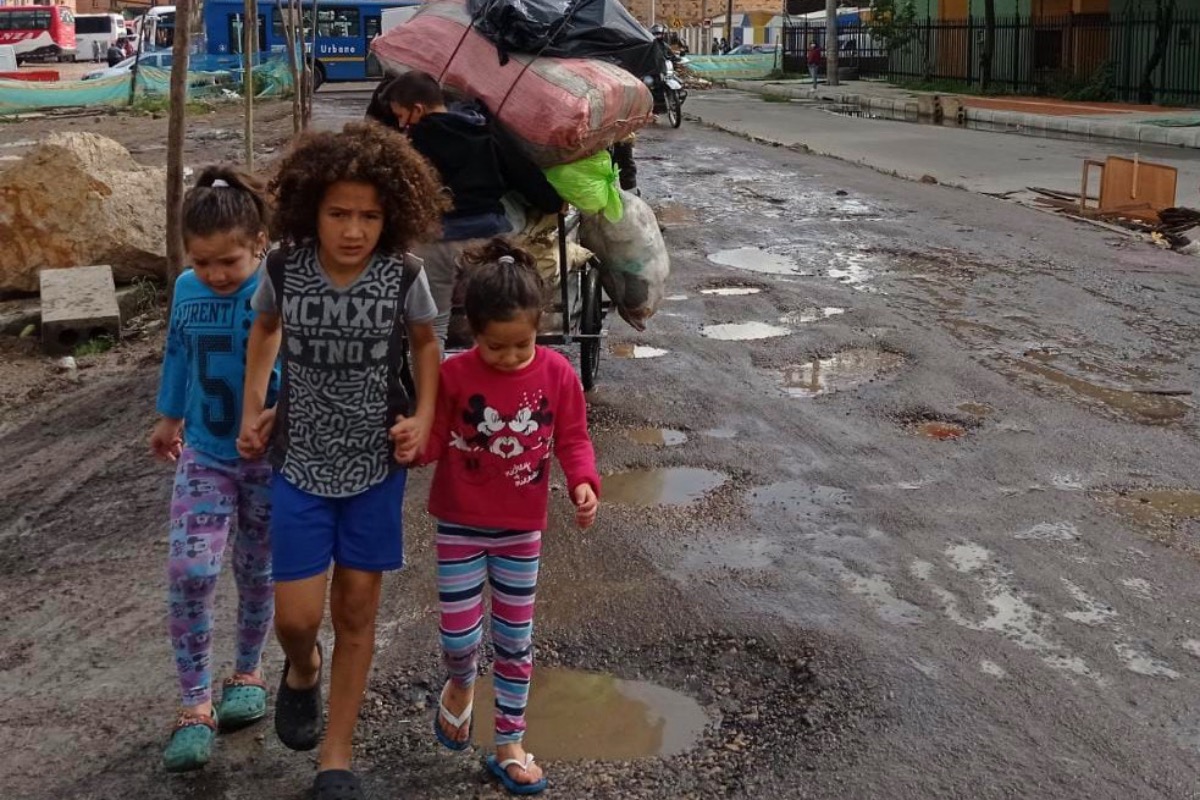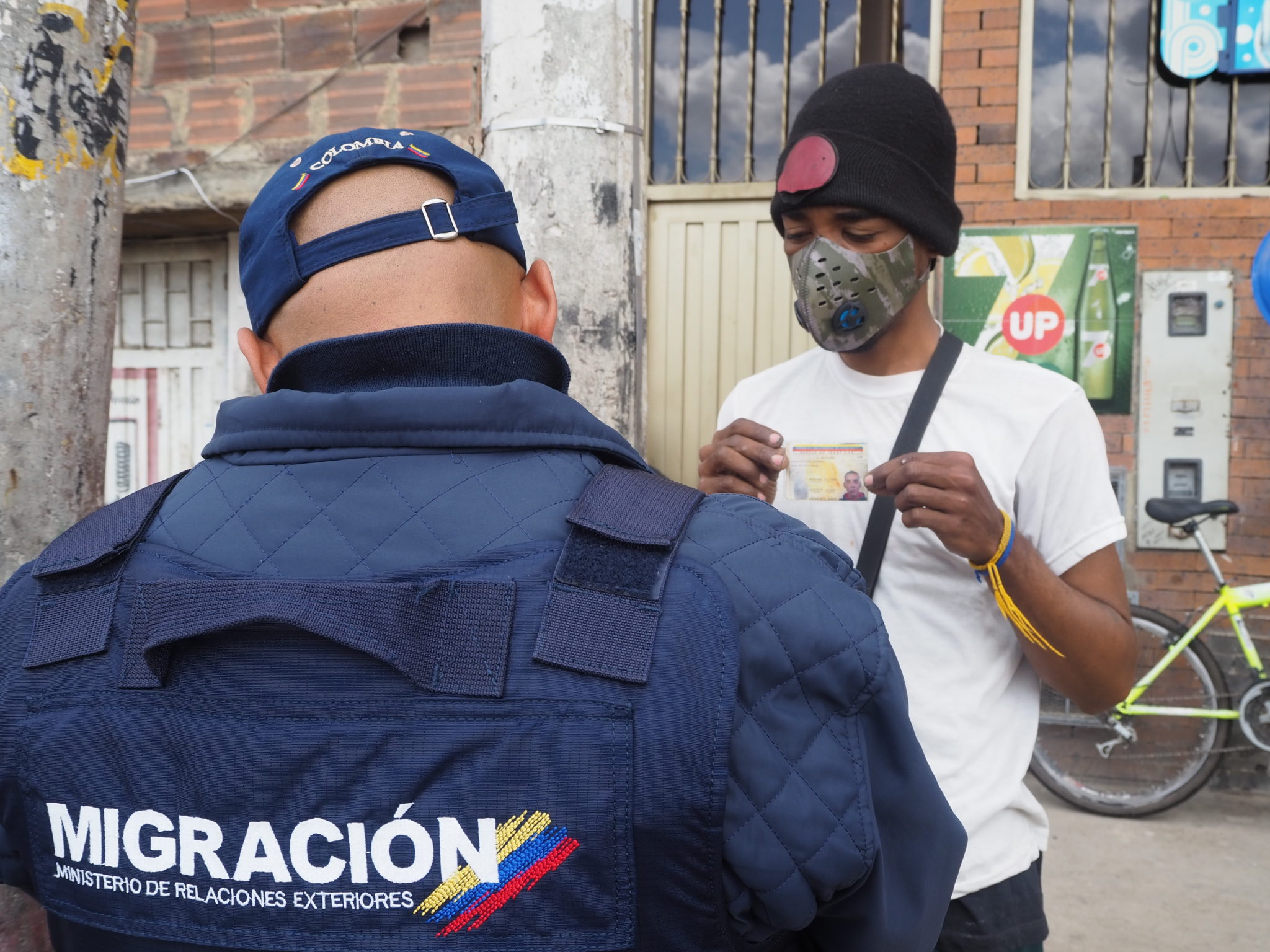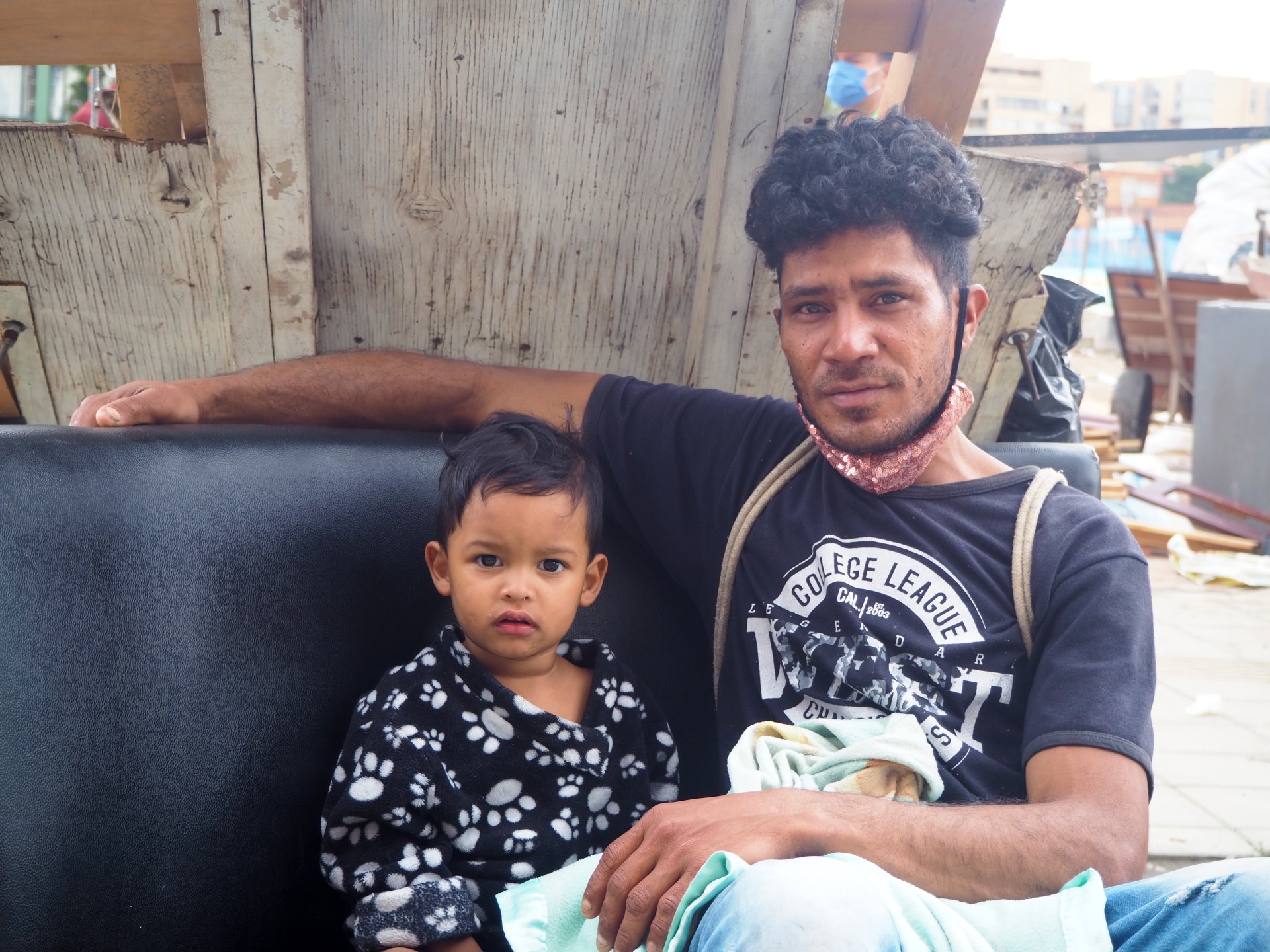

Venezuelan migrant children flee before the arrival of Migración Colombia in the Patio Bonito neighborhood of Bogotá, Colombia, October 26, 2021. (David González M./Latino Rebels)
BOGOTÁ, Colombia — In Colombia, news of violence is not news anymore.
The spiral of death is increasing constantly in President Iván Duque’s government. However, there is a growing phenomenon that has not been reported before: It is now three times more dangerous to be a Venezuelan migrant than a Colombian citizen.
In the second week of October, the main media and social networks horrified public opinion in the country by spreading the news of two minors killed in Tibú, a border town with Venezuela.
***WARNING: Graphic Images ***
#Colombia 2021 pic.twitter.com/hS5jVNtqQg
— Carlos Montero (@CMonteroOficial) October 10, 2021
One video on Twitter shows a group of merchants who had detained the minors and accused them of having stolen some product from a store. One of the minors was a 12-year-old Venezuelan boy who was carrying a brown school bag. A second video showed the body of the minor, along with his companion, lying next to the road with a sign that had the word “thieves” written on it.
The murder of the Venezuelan boy in Tibú added to the 362 Venezuelan migrants killed this year in Colombia. At least 1,933 migrants were murdered between 2015 and 2020, with 836 disappeared, according to the Consultancy for Human Rights and Displacement (CODHES).
In a report, the group states: “While the national homicide rate [in Colombia] has been decreasing steadily … the homicide rate of the Venezuelan population has grown and is 2.8 times greater.”
The most dangerous area is Norte de Santander, a department in northeastern Colombia that is a central part of the long border that joins the two countries. At least 40 gangs and 12 armed structures operate in its capital, Cúcuta, from FARC dissidents to the offshoots of paramilitary groups, such as the Clan del Golfo and Los Ratrojos.
The region is a no man’s land.
“What we have been finding since 2015, when the migration crisis arises, is that Venezuelan migrants arrive in regions where there is an overflow of violence,” says Wilfredo Cañizares, the director of Fundación Progresar who also runs a human rights observatory in the department. “The criminality acts with total freedom. There are paramilitary, guerrilla groups…”
He explains that in Cúcuta this context has added to the growth of hate speech and acts against the Venezuelan population. “Everything has happened here, acts of aggression such as throwing a homemade bomb filled with gasoline … at a group of Venezuelans who were sleeping in a coliseum. Or like shooting Venezuelans sleeping under a bridge.”
Cañizares also warns about calls on social networks encouraging marches to demand the expulsion of Venezuelans or speeches by xenophobic media, blaming migrants for the growing insecurity.
“There are the official figures that show that the general increase of crime in Colombia has nothing to do with the immigration issue,” Cañizares adds. “Between three percent and five percent of those arrested in 2020 as a result of criminal activities are Venezuelan migrants. Ninety-seven percent were Colombian.”


A Venezuelan migrant speaks with an agent from Migración Colombia in Patio Bonito, Bogotá, Colombia, October 26, 2021. (David González M./Latino Rebels)
And although the situation in Norte de Santander is a high risk, the CODHES report indicates Bogotá as the second most dangerous city for Venezuelan migrants.
In the Colombian capital live most of the approximately 1,800,000 Venezuelan migrants, about 21 percent of all Venezuelan migrants in Colombia. The southwestern Kennedy district, the most populated in the city and plagued by COVID-19 and insecurity, has received the majority of migrants.
In Kennedy’s Patio Bonito neighborhood, Migración Colombia carries out constant migration control operations. Dozens of Venezuelan families inhabit small rooms in houses crowded together along congested streets
One of those families is Yeferson’s, a 26-year-old Venezuelan who arrived in the area fleeing Barranquilla, where he was attacked and stabbed in the arms on a central street. He travels with his three-year-old son and his 22-year-old wife.
“Venezuela is also insecure,” he says. “We are in the middle of two very difficult worlds. But we have no choice.”


Yeferson and his son during a Migración Colombia operation in Patio Bonito, Bogotá, Colombia, October 26, 2021. (David González M./Latino Rebels)
Luis Carlos Rodríguez is one of the CODHES researchers who has denounced the growing violence against Venezuelans. “In Patio Bonito, for example, (Venezuelans) are threatened if they don’t do what the actors ask or pay the “vaccine” (extortion) for working on a corner.”
Rodríguez explains that the high risk to migrants is due to their arrival in very dangerous places, where they are unaware of the dynamics of violence and lack of protection.
“Most of the murders are carried out with a firearm. That is very telling,” he added. “We are not necessarily talking about people who, in the middle of a street fight, beat him with a stick. We are talking about a firearm, that is, the involvement of criminal networks, criminal gangs, or armed actors, and that shows what the situation is.”
The figures in the CODHES report also show that migrants are victims of sexual crimes.
Most security indicators have fallen in the country over the last three years of the Duque regime, with 86 massacres recorded only this year so far. And with less than a year before the next presidential election, there is the latent risk that xenophobic discourse will stoke the flames during the campaign season ahead and increase the risk to Venezuelan migrants in Colombia.
***
David González M. is an award-winning conflict and human rights reporter for international media. Twitter: @Davo_gonzalez


